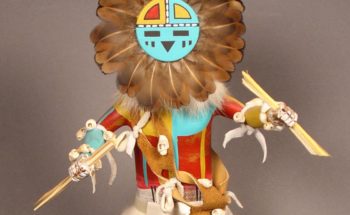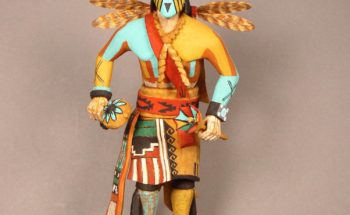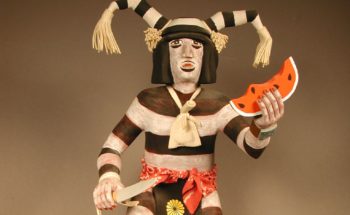Katsina: Contemporary Hopi Sculpture
For the Hopi, katsinas exist in three forms: spirits, masked dancers, and dolls. The spirits act as intermediaries between the supernatural and mortal worlds, fostering fertility, growth, and well-being. For six months of the year, when they reside in the Hopi villages, katsinas are represented by masked dancers. The doll versions, carved from cottonwood root, are given to women and especially girls as a blessing. Traditionally they have no bases, but are meant to be hung on home walls, where girls can learn to differentiate the many katsinas.
By the late 19th century, so many dolls were being collected by anthropologists and traders that the Hopi began making them specifically for sale. Since then styles have gone through several phases, but generally the figures have become works of art: elaborate sculptures, in action poses, on bases that are signed by the carver. All the examples displayed at the Museum are in the Modern Contemporary Style (late 1970s-present), in which the figures are realistically detailed, made solely of wood, and painted in muted commercial pigments.
The twelve dolls on display were selected from a collection of 200 that were collected by Lorrie and Richard Greene, from the late 1970s through the 1990s, and donated in 2008. This collection documents an important period in the development of 20th century Hopi sculpture.



